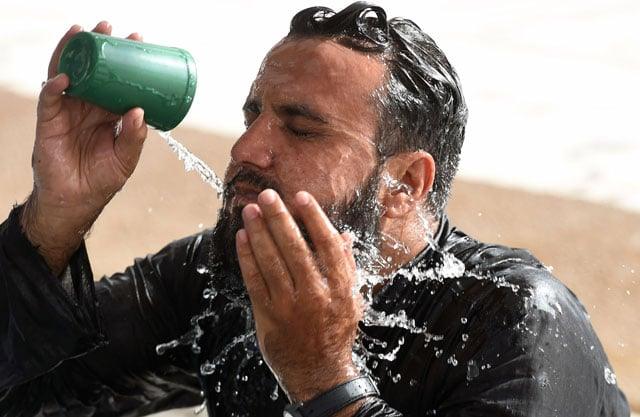Pakistan Meteorological Department (PMD) has issued a heat wave alarm that predicts unusually high temperatures in large parts of Sindh province through April 18.
Under the current conditions, maximum temperatures of the day in districts, including Dadu, Shaheed Benazirabad, Jacobabad, Larkana and Sukkur are expected to remain 6 to 8 ° C above normal, reported Express News.
Similarly in Badin, Tharparkar, Umerkot and Hyderabad districts, temperatures can exceed normal intervals by 4 to 6 ° C, according to the department.
PMD also occasionally predicted Gusty Vind in Karachi, Thatatta, Sujawal, Badin, Tharparkar, Umerkot, Sanghar, Hyderabad and Jamshoro Districts during this period.
Given the prevailing heat wave, the residents – especially children, the elderly and women – have been asked to take precautions.
The public is encouraged to avoid direct exposure to sunlight in the peak load and remain hydrated.
Karachi weather forecasts in the next 3 days
Karachi moisture levels are expected to rise, which intensifies the perceived temperature. The relative humidity can vary between 70% and 80% in the morning and between 50% and 60% in the evening.
Over the next three days, the weather is expected to stay warm and humid at times with warm wind. Maximum temperatures in Karachi could vary between 35 ° C and 37 ° C.
In light of the extreme weather conditions, experts recommend breathable and light colored fabrics such as cotton and linen as the most appropriate clothing to help deal with heat stress.
For men, loosely suitable cotton jerseys are suggested in pale colors such as white, beige and pastels to reflect sunlight and improve air circulation.
Polo shirts paired with linen pants or light chinos are recommended for those seeking both comfort and a more polished look. Heavier fabric, such as denim, should be avoided as they trap heat and reduce ventilation.
Women were asked to continue carrying traditional lawn fabric – a light cotton material that was widely used in Pakistan’s summer clothing.
Liquid dresses, palazzo pants and airy tops made of natural fibers provide the necessary ventilation while maintaining cultural modesty.
Accessories such as cotton scarves and chiffon dupattas offer extra protection against direct sunlight without adding heat.
Children who are particularly vulnerable to hot -related illness require special consideration. Experts recommend soft, breathable cotton clothing with tight weaver to help block harmful UV rays.
Long -sleeved shirts and loose pants provide better sun protection than short clothes, and broad -braking hats are encouraged to protect the head, face and ears.
During hot nights, children can benefit from wearing minimal clothing, such as a diaper or light pajamas, with a thin cotton sheet instead of heavy bedding.



